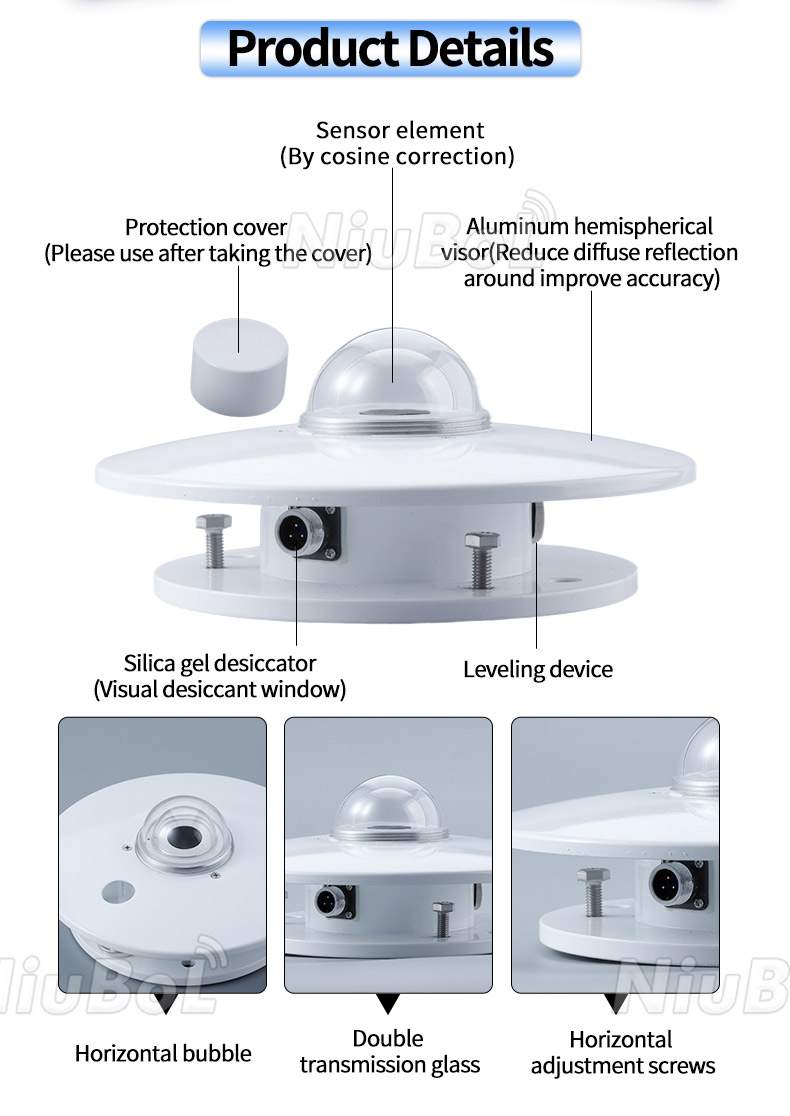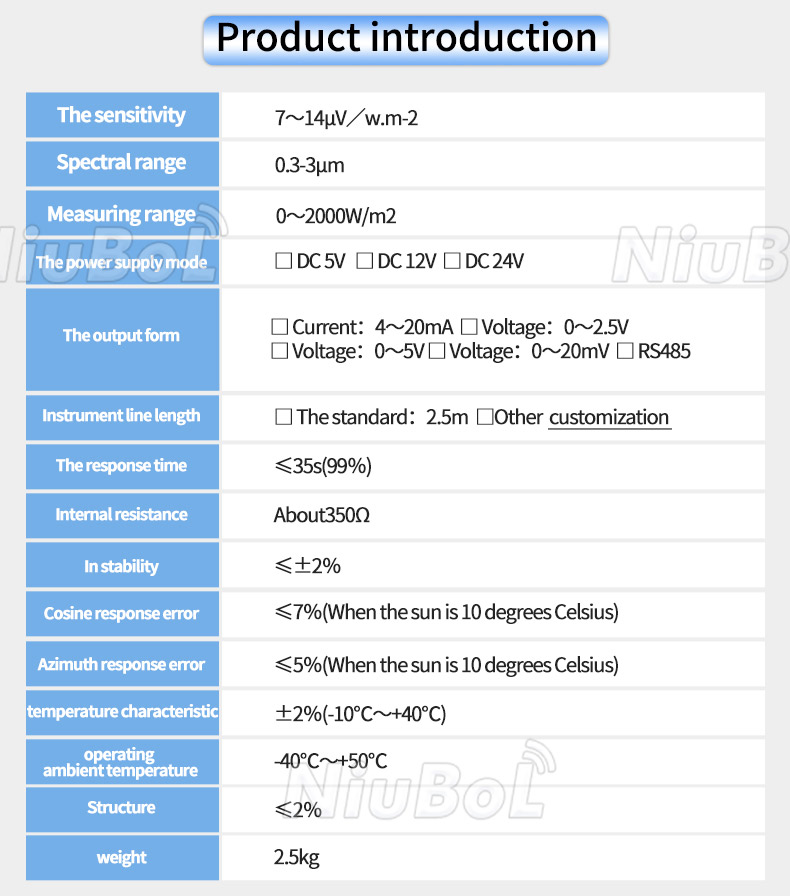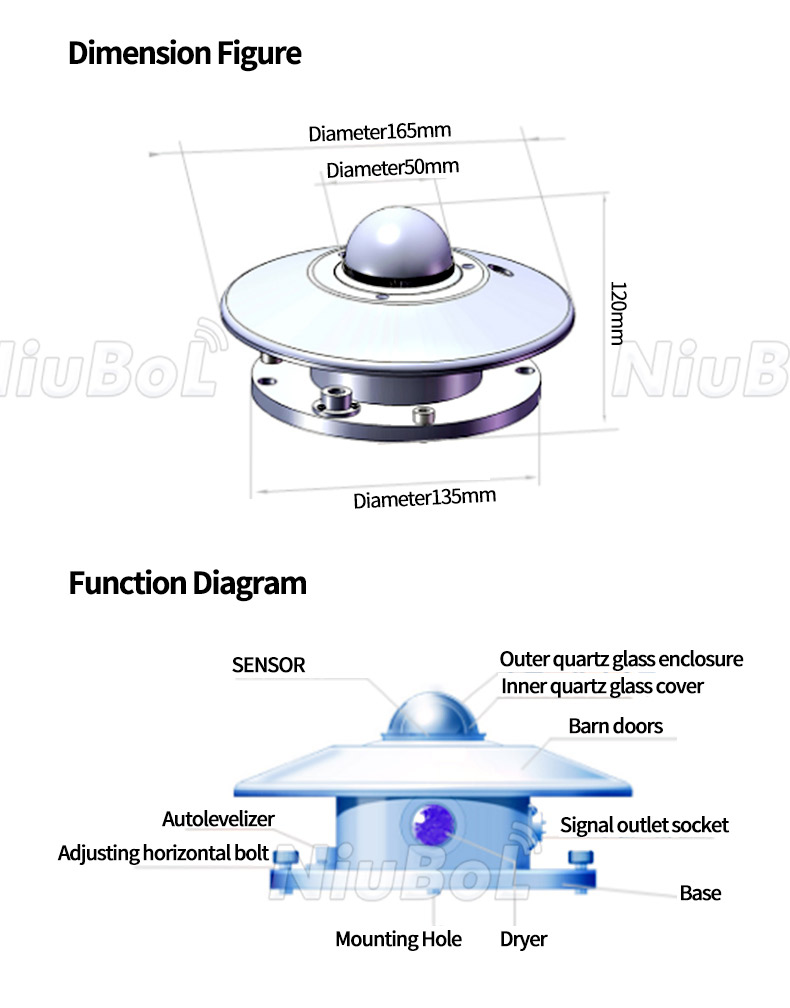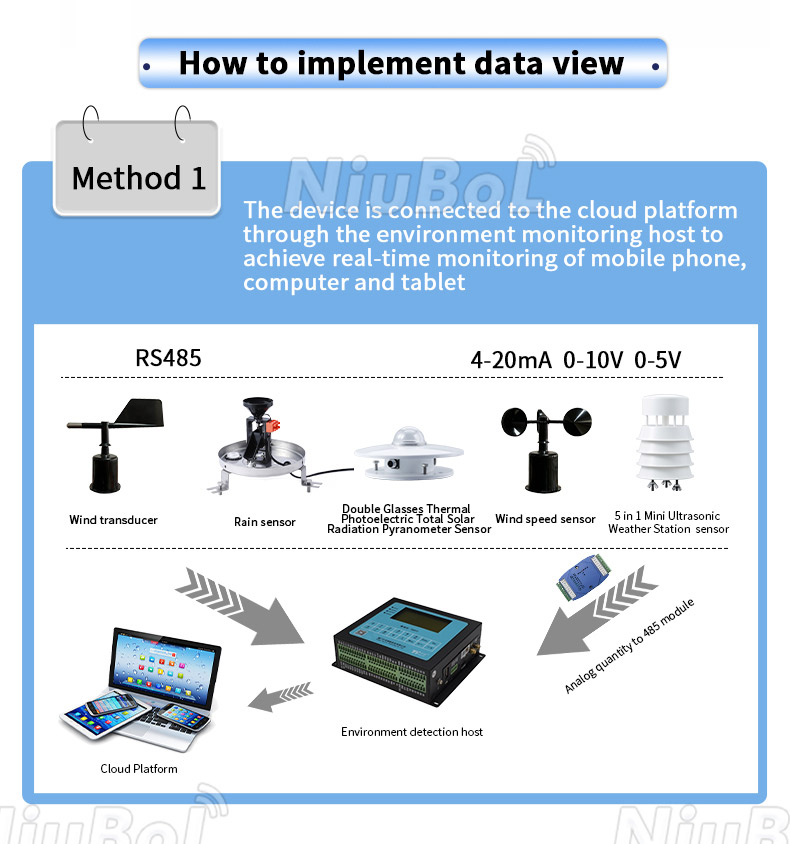

— Blogs —
—Products—
 Consumer hotline +8618073152920
Consumer hotline +8618073152920 WhatsApp:+8615367865107
Address:Room 102, District D, Houhu Industrial Park, Yuelu District, Changsha City, Hunan Province, China
Product knowledge
Time:2023-08-13 14:42:35 Popularity:1931
Pyranometer: Key Instrument for Measuring Solar Radiation
Abstract: This article provides an introduction to the pyranometer, a key instrument used for measuring solar radiation. We will discuss the principles and working mechanism of pyranometers, as well as their applications in meteorology and renewable energy.
Pyranometer Introduction:
Solar radiation plays a crucial role in the Earth's energy balance. It is the primary source of energy received at the Earth's surface and has significant impacts on climate, weather, and renewable energy. To accurately measure and monitor solar radiation, scientists have developed an instrument called the pyranometer. This article delves into the working principles of pyranometers and their applications in various fields.
I. Principles of Pyranometers:
Pyranometers are devices that measure solar radiation using the principle of thermal electric effect. They consist of a sensing area and a thermal sensor. When solar radiation irradiates the sensing area, the thermal energy causes a temperature rise in the thermal sensor, resulting in the generation of voltage. This voltage is directly proportional to the intensity of solar radiation and can be calibrated to obtain accurate radiation data.

II. Working Mechanism of Pyranometers:
1. Receiving Radiation: The sensing area of pyranometers is designed to have highly absorptive material, such as a black coating, that absorbs solar radiation efficiently. When solar radiation impinges on the sensing area, the thermal energy is absorbed, leading to a temperature increase.
2. Thermal Sensor: Pyranometers contain a thermal sensor, such as a thermocouple or a thermopile, which generates voltage with an increase in temperature. This voltage is a result of the conversion of thermal energy caused by solar radiation into electrical energy.

3. Signal Processing: Pyranometers also include a signal processing system that amplifies and processes the voltage signal obtained from the thermal sensor. By processing and calibrating the signal, accurate solar radiation intensity can be obtained.
III. Applications of Pyranometers:
1. Meteorological Observation: Pyranometers are widely used in meteorological observations. They can measure parameters such as total solar radiation, radiation flux, and ultraviolet radiation. These data are crucial inputs for meteorological research, climate models, and weather forecasting.
2. Solar Energy Utilization: Pyranometers are vital for assessing the availability of solar energy resources. They can measure solar radiation and provide data required for the design and performance evaluation of solar energy systems. This helps determine optimal energy output and system efficiency.

3. Environmental Protection: Pyranometers also play a significant role in environmental monitoring. They can measure surface temperature, ice and snow melting rates, and other indicators, helping scientists understand climate change and environmental dynamics.
Conclusion:
Pyranometers are essential tools for measuring solar radiation and have significant applications in meteorology, energy, and environment fields. By utilizing the principles and working mechanisms of pyranometers, we can obtain accurate solar radiation data, providing valuable information and support for scientific research, energy planning, and environmental conservation. With advancing technology, pyranometers will continue to evolve, offering us more critical data and insights regarding solar radiation.

Acknowledgment:
We express our gratitude to the developers and scientists who have contributed to the development of pyranometers. Their work enables us to better understand and utilize solar radiation as a vital resource.
NBL-W-HPRS-Solar-Radiation-Sensor-Instruction-Manual-V3.0.pdf
NBL-W-SRS-Solar-radiation-sensor-instruction-manual-V4.0.pdf
Related recommendations
Sensors & Weather Stations Catalog
Agriculture Sensors and Weather Stations Catalog-NiuBoL.pdf
Weather Stations Catalog-NiuBoL.pdf
Related products
 Combined air temperature and relative humidity sensor
Combined air temperature and relative humidity sensor Soil Moisture Temperature sensor for irrigation
Soil Moisture Temperature sensor for irrigation Soil pH sensor RS485 soil Testing instrument soil ph meter for agriculture
Soil pH sensor RS485 soil Testing instrument soil ph meter for agriculture Wind Speed sensor Output Modbus/RS485/Analog/0-5V/4-20mA
Wind Speed sensor Output Modbus/RS485/Analog/0-5V/4-20mA Tipping bucket rain gauge for weather monitoring auto rainfall sensor RS485/Outdoor/stainless steel
Tipping bucket rain gauge for weather monitoring auto rainfall sensor RS485/Outdoor/stainless steel Pyranometer Solar Radiation Sensor 4-20mA/RS485
Pyranometer Solar Radiation Sensor 4-20mA/RS485
Screenshot, WhatsApp to identify the QR code
WhatsApp number:+8615367865107
(Click on WhatsApp to copy and add friends)
